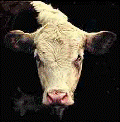Animal Science, Department of

Department of Animal Science: Dissertations, Theses, and Student Research
Date of this Version
8-2015
Document Type
Thesis
Abstract
Four experiments were conducted to evaluate estrus synchronization and heifer development systems. In the first experiment delaying AI 19 h following GnRH administration in a hybrid estrus detection and time AI protocol was evaluated. Final pregnancy rate was not different among heifers detected in estrus, AI at the time GnRH administration, or delayed AI. The second study compared the effect of melengestrol acetate (MGA) -PG and 14-d controlled internal drug release (CIDR) -PG estrus synchronization protocols on estrus response and pregnancy rates of 311 d old heifers. Final pregnancy rate was similar between CIDR and MGA treatment groups. The objective of the third study was to determine the impact of heifer development system on subsequent growth and reproductive performance in 2 breeding seasons. Heifers were offered ad libitum meadow hay (HAY) and 1.81 kg/d (29% CP, DM basis) supplement or allowed to graze meadow (MDW) and 0.45 kg/d supplement. Although ADG during the winter feeding period was greater for HAY heifers, BW was similar between treatments in the spring, summer, and at pregnancy diagnosis suggesting a compensatory growth effect for MDW heifers. Similarly, pubertal status or pregnancy rate was not different, indicating a lower input winter management system is viable to maintain heifer pubertal status and pregnancy rates in 2 breeding seasons. Finally, to determine the impact of heifer development system on pregnancy rates and feed efficiency as a pregnant first calf heifer a 3 yr study was conducted. In Yr 1, weaned heifers either grazed corn residue (CR) or were fed in a drylot (DLHI). In Yr 2 and 3 heifers either grazed CR, upland range (RANGE), or were fed diets differing in energy, high (DLHI) or low (DLLO), in a drylot setting. Pregnancy rates to AI were similar among treatments. A subset of AI-pregnant heifers from each treatment were placed in a Calan gate system. Intake did not differ among treatments, either as DMI or as a percentage of BW.
Advisors: Rick N. Funston and Andrea S. Cupp


Comments
A THESIS Presented to the faculty of The Graduate College at the University of Nebraska In Partial Fulfillment of Requirements For the Degree of Master of Science, Major: Animal Science, Under the Supervision of Professors Rick N. Funston & Andrea S. Cupp. Lincoln, Nebraska: August, 2015
Copyright 2015 Hazy Rae Nielson